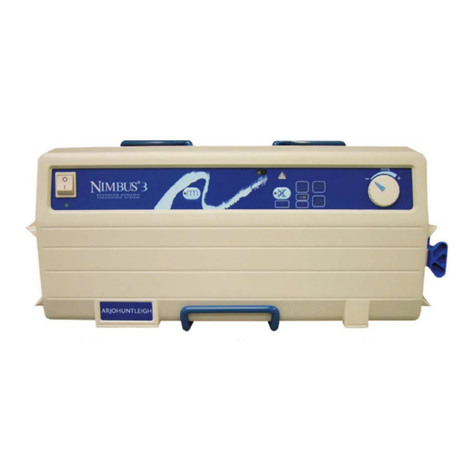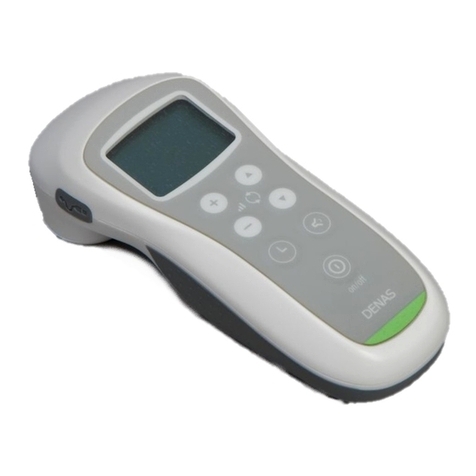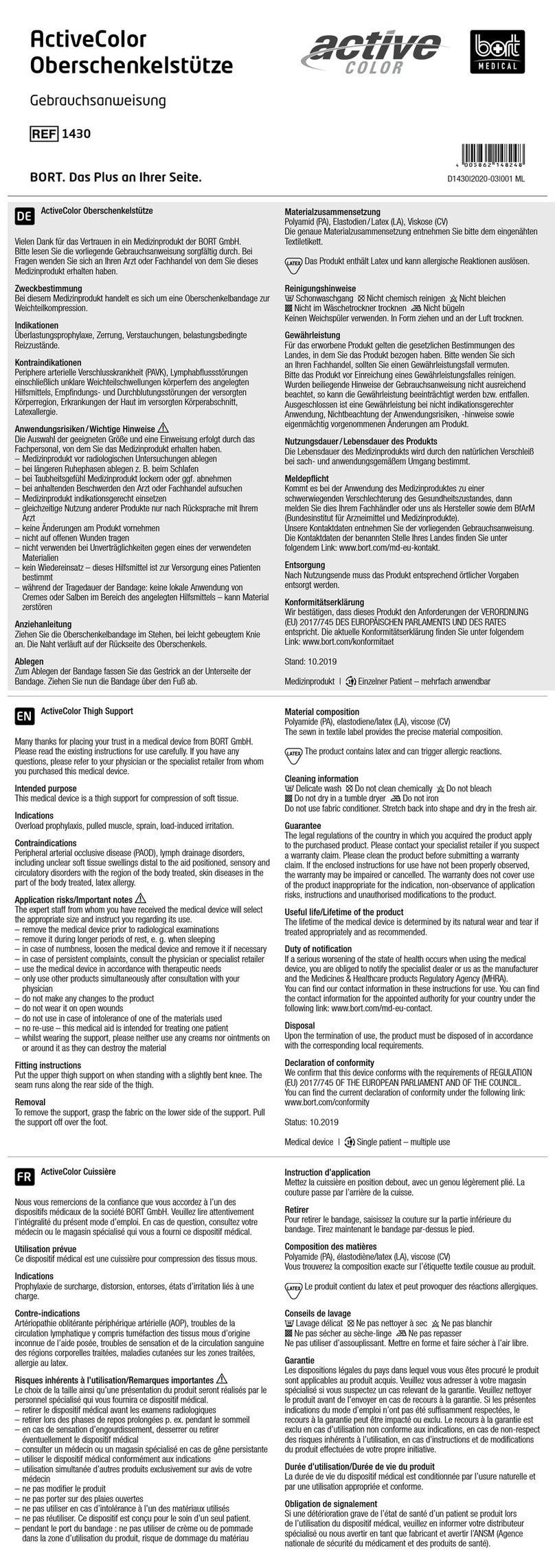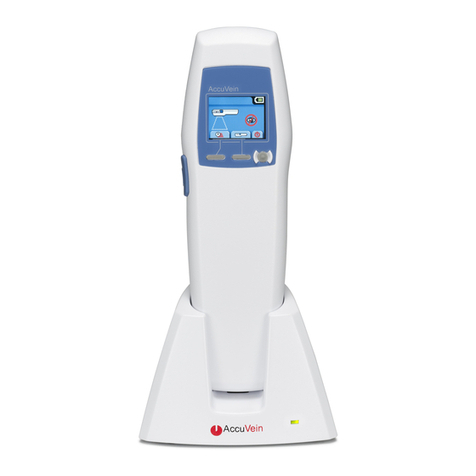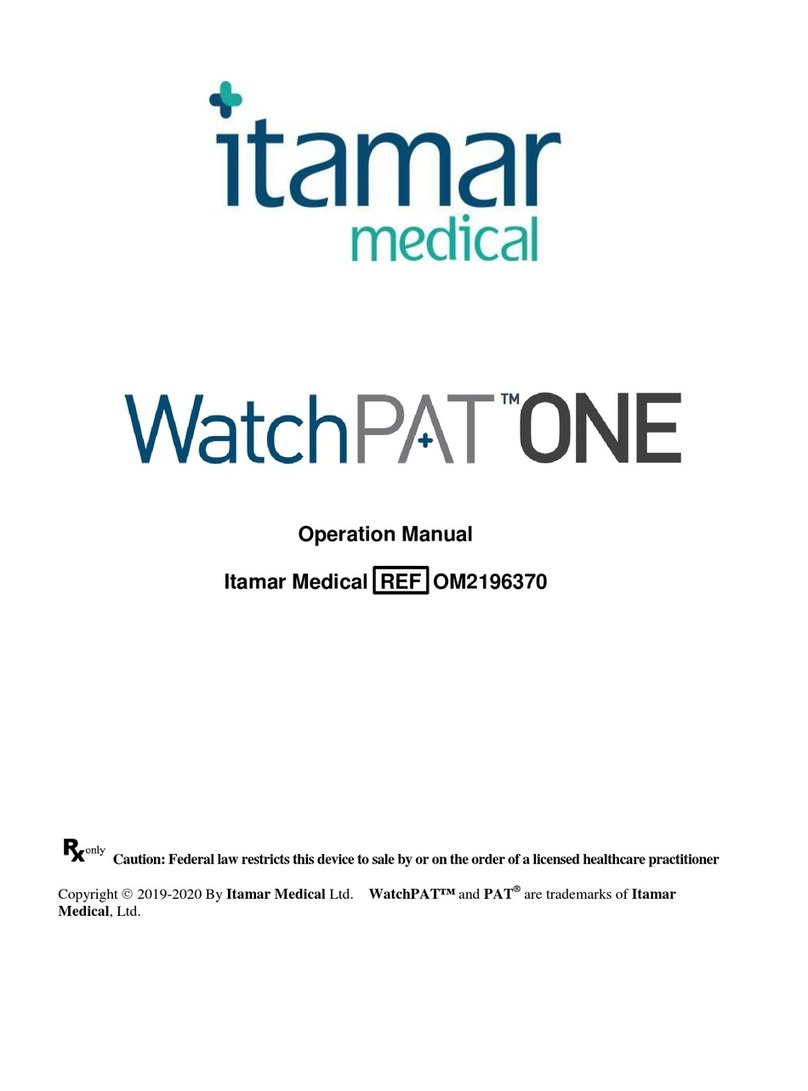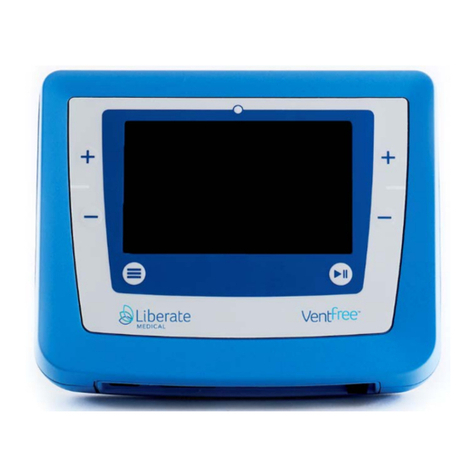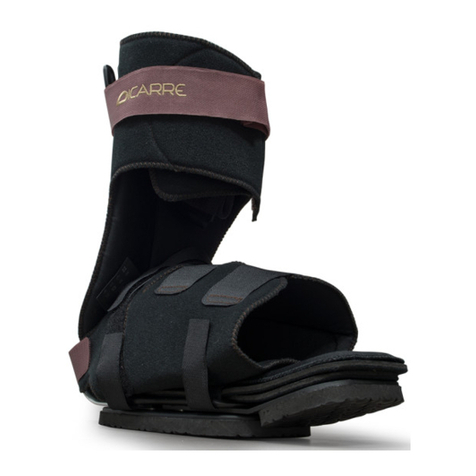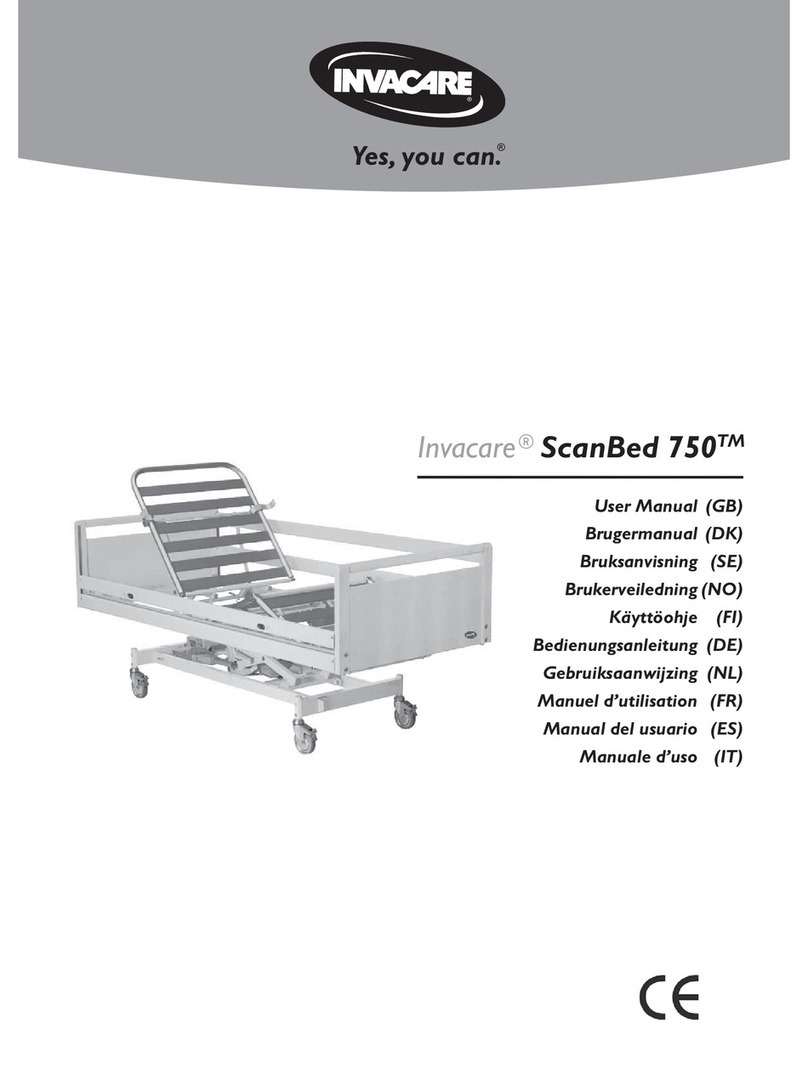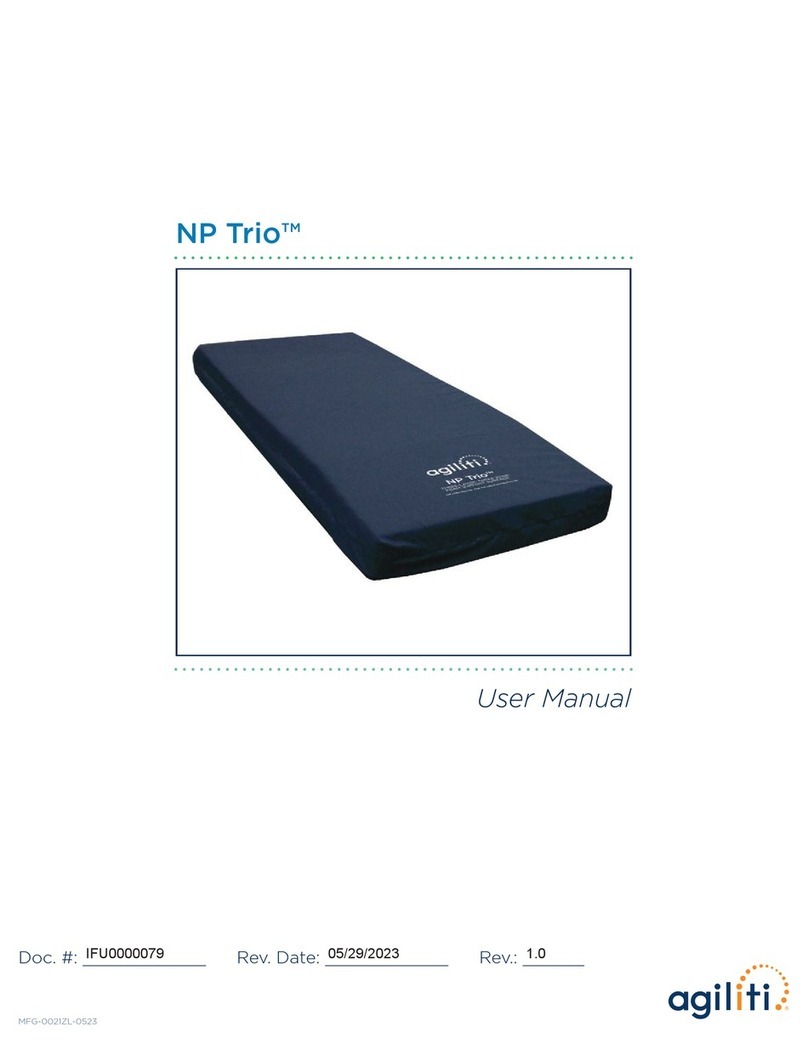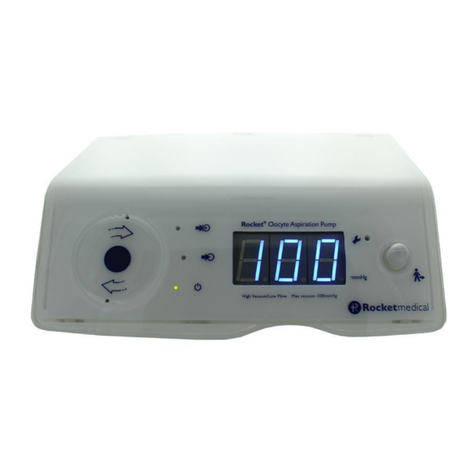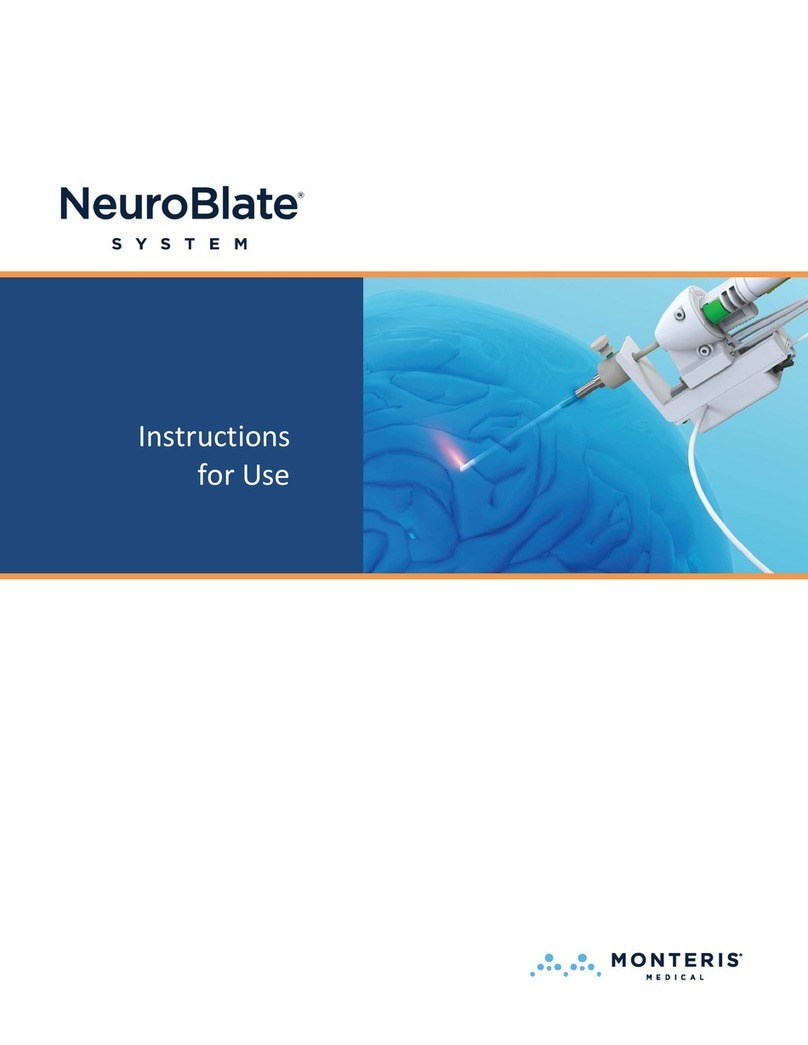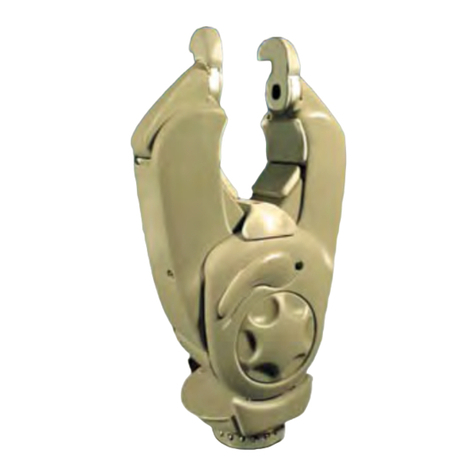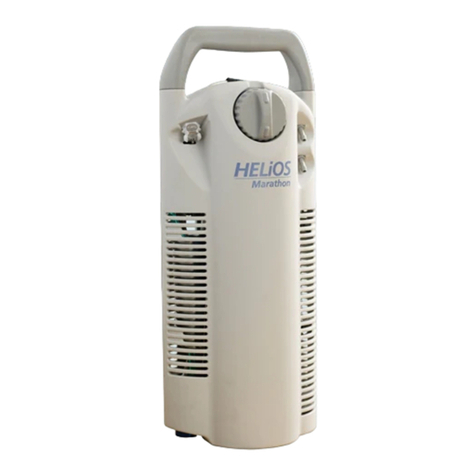
5 of 11
2.2. Prepare a surface within the sterile field to receive the XO1device and components.
2.3. Using sterile technique, open the leg strap pouch and place the leg strap onto the prepared
surface within the sterile field.
2.4. Using sterile technique, open the syringe pouch and place the syringe onto the prepared
surface within the sterile field.
2.5. Using sterile technique, open the XO1device and place the contents onto the prepared surface
within the sterile field.
3. Preparation of the XO1 device for use:
3.1. Preparation of the XO1Device is to be completed when the surgeon is ready to begin the
assessment of the ligament balance. The XO1Device is intended to be used for approximately
15 minutes during surgery. The device will not operate properly once the Controller Status
Light flashes red. see Preautios
3.2. Preparation of the XO1device is to be performed within the sterile field using appropriate
techniques.
3.3. Attach the female end of the dual check valve to the 20ml syringe and seat the luer fitting by
turning it clockwise.
3.4. Attach the female end of the extension line to the dual check valve and seat the luer fitting by
turning it clockwise.
3.5. Remove the luer cap from the XO1device. Attach the male end of the extension line to the XO1
device and seat the luer fitting by turning it clockwise.
3.6. Place the battery into the XO1device ith the dot ad + o the atter ap faig up. Push
the battery in until it stops. Rotate the battery clockwise approximately one quarter turn to
lock.
3.6.1.When the battery is correctly seated the Controller Status Light appears:
3.6.1.1. Momentarily red when the battery is first seated. (1 second or less)
3.6.1.2. Flashing green continuously.
3.7. At this point the preparation of the XO1 device is complete.
3.8. If any of the operations fails to perform as described, refer to the Trouleshootig setio.
4. Activation of Communication and GUI.
4.1. Ensure that the GUI is displayed on the PC.
4.2. Verif that the Radio displa loated i the upper left of the GUI sree idiates at least oe
bar.
4.3. Choose the knee that the procedure is to e perfored o, the hoose Net.
4.4. I the Trial “erial Nuer o, hoose the serial uer that orrespods ith the XO1
deie eig atiated, the hoose Net.
4.5. I the Trial “erial Nuer o, hoose “elet to ofir the preiousl highlighted device
serial number. At this point the preliminary activation of the XO1 device is complete.
4.6. If a of the operatios fails to perfor as desried, refer to the Trouleshootig setio.
5. Placement of the device on the patient.
